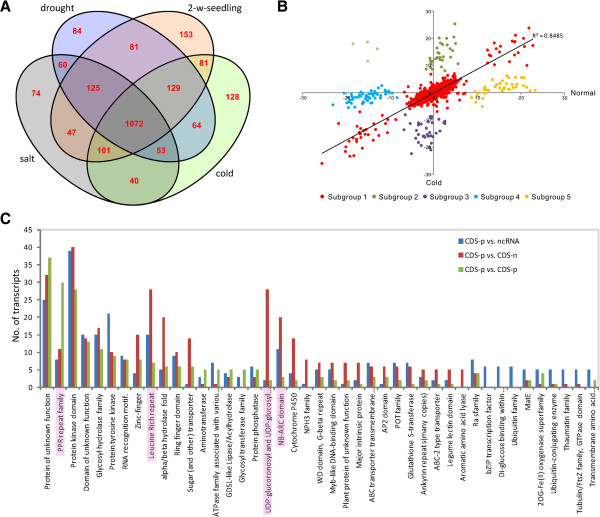Figure 1.
Overview of 2292 one-to-one cis-NATs. (A) Venn diagram showing the shared cis-NATs that expressed under normal (control), cold, salt and drought conditions. The numbers of cis-NATs that expressed under different conditions are noted in the corresponding parentheses. (B) Scatter plot showing comparison of transcripts expression ratio trends of 1072 co-expressed cis-NAT pairs between normal and cold stress conditions. Five subgroups 1, 2, 3, 4 and 5 are indicated by red, green, purple, blue and orange points, respectively. (C) Three sets of genes are categorized on the basis of components of each cis-NAT pair. Set I (blue bar): 767 cis-NAT pairs of protein-coding genes and non-protein-coding RNAs; Set II (red bar): 818 cis-NAT pairs of protein-coding genes and predicted CDS without any PFAM domain; Set III (green bar): 377 cis-NATs composed of both protein-coding genes. Y-axis represents the number of transcripts. X-axis represents 43 protein families that were the major enriched terms in either of three sets. Four proteins of pentatricopeptide repeat (PPR) families, leucine rich repeat, NB-ARC domain and UDP-glucoronosyl and UDP-glucosyl transferase, which exhibited distinctively enriched terms with P < 0.001 in Sets II and III, are highlighted in pink in the X-axis.

